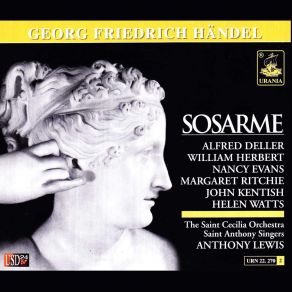Ian Wallace
Wikimp3 information about the music of Ian Wallace. On our website we have 13 albums and 17 collections of artist Ian Wallace. You can find useful information and download songs of this artist.
Biography
[Edit]Best known as the drummer in one of the longer-lasting incarnations of King Crimson (January 1971 - April 72), and as a drummer for Bob Dylan, Jackson Browne, Bonnie Raitt, and Crosby, Stills & Nash, Ian Wallace was one of rock's busier percussionists for more than a quarter century. His 40-year career allowed him to work alongside stellar musicians on both sides of the Atlantic, from pioneering bluesman Alexis Korner to such stars and superstars as Bob Dylan, Bonnie Raitt, Lindsey Buckingham, and Larry Coryell.
Born in 1946 in Bury, England, Wallace organized his first rock band, the Jaguars, while still in school. In 1963, at age 17, he joined the Warriors, an outfit whose membership included a young vocalist named Jon Anderson, later of Yes, as well as future Badger bassman David Foster. The Warriors lasted until the end of 1967, after which he and Foster briefly became members of Big Sound, an outfit that spent a fair amount of time touring northern Europe. He passed through a number of groups in the late '60s, including the World, featuring the Bonzo Dog Band's Neil Innes on vocals, guitar, and keyboards, which lasted six months in 1970.
In early 1971, Wallace became a member of a new performing version of King Crimson. The group, originally formed in 1969, had broken up before the end of that year following its first U.S. tour, and — under the leadership of surviving co-founder Robert Fripp (with non-performing member Peter Sinfield) — had gone through several interim lineups, none of which had lasted more than a few months. Wallace, along with reedman and flautist Mel Collins and bassist/singer Boz Burrell, would become the first version of the group to concertize widely or leave behind more than one official album.
This version of King Crimson was a great performing unit, but its unity was always in doubt, especially when rumors began abounding of an impending breakup within six months of its formation. They toured extensively and won a serious following, but internally, their relations were a nightmare, as Wallace, Burrell, and Collins insisted on a degree of autonomy as composers that clashed with Fripp's musical vision of the band.
During the first six months of his work with Crimson, Wallace's playing broke some new ground on stage when Peter Sinfield, the group's lyricist and computer/electronics expert, used a VCS-3 synthesizer to process the sound of Wallace's drums. Not all of that work was necessarily captured to best advantage on the official live recordings of the period, but tapes of the band in concert from 1971-1972, released by Fripp himself, have revealed the full complexity of Wallace's playing, and the guitarist has noted the quality of his work in live performance.
Wallace, Burrell, and Collins turned out to enjoy working together more than they did working for Robert Fripp, and they quit the band en masse in the early spring of 1972. They immediately joined veteran British bluesman Alexis Korner and Danish guitarist/singer Peter Thorup in an outfit called Snape, who recorded and toured central and northern Europe, playing a brand of blues-based rock that was far-removed from Crimson's sound.
Wallace continued working with Korner for two years and on four albums, and also played with Steve Marriott, Big Jim Sullivan, and Alvin Lee. In 1978, he became Bob Dylan's drummer, beginning with the Street Legal album and continuing on the subsequent tour and the Live at Budokan double-LP as well. During the '80s, Wallace played with such rock luminaries as Al Kooper, Ron Wood, David Lindley, his longtime friend Jon Anderson, Stevie Nicks, Lindsey Buckingham, Don Henley, Graham Nash, Jackson Browne, Bonnie Raitt, the Traveling Wilburys, and Roy Orbison.
In the '90s, he worked with Joe Walsh and Don Henley, but much of Wallace's activity centered around his own label, Artist Road Records of Santa Fe, NM. Wallace's work also moved more in the direction of jazz in tandem with his business partner in Artist Road, pianist Brian Trainor, and his gigs in those years included work with Larry Coryell. He was also a member of the sadly short-lived Los Angeles-based band the Teabags, which included ex-Yes guitarist Peter Banks, vocalist Jackie Lomax (late of the Undertakers and Badger), Kim Gardner (also of Badger), and singer Graham Bell. In 2003, Wallace returned to the repertory of King Crimson for the first time in more than 30 years when he joined the 21st Century Schizoid Band, a group of Crimson expatriates (sans Fripp), succeeded Michael Giles (whom he had succeeded, several times removed, in 1971, in the original group). That same year, Wallace released his one and only solo album, Happiness with Minimal Side Effects. He also began taking his King Crimson repertory into new and experimental directions with the Crimson Jazz Trio, who recorded two albums and toured for a short time. In 2006, Wallace was diagnosed with esophageal cancer, to which he succumbed early the following year. As an alumnus of a band with more than its share of top musicians, he had carved out a notably successful and diverse career across 40 years, ranging across rock, blues, and jazz.
Title: It Was Better On Paper
Artist: Ian Wallace, My Friend, Nathan Shaw
Genre: Alternative, Songwriter/Lyricist
Title: Sullivan: Iolanthe, or The Peer and the Peri [1958], Vol. 2
Artist: John Cameron, Heather Harper, Alexander Young, Monica Sinclair, Owen Brannigan, Glyndebourne Festival Chorus, Ian Wallace, April Cantelo, Elsie Morison, George Baker, Sir Malcolm Sargent, Pro Arte Orchestra, Marjorie Thomas
Genre: Opera
Title: Sullivan: Iolanthe, or The Peer and the Peri [1958], Vol. 1
Artist: John Cameron, Heather Harper, Alexander Young, Monica Sinclair, Owen Brannigan, Glyndebourne Festival Chorus, Ian Wallace, April Cantelo, Elsie Morison, George Baker, Sir Malcolm Sargent, Pro Arte Orchestra, Marjorie Thomas
Genre: Opera
Title: Heart Cycle
Artist: Ian Wallace, My Friend, Nathan Shaw
Genre: Alternative, Songwriter/Lyricist
Title: Amiscellany - Music Making With Old Friends
Artist: Leslie Howard, Levon Chilingirian, Ian Wallace, Donald Swann, Steve Race, John Amis, Jeffery Tate
Genre:
Collections
Title: The Oliver! Collection
Genre: Theatre/Soundtrack
Title: Songs from Oliver
Genre: Theatre/Soundtrack
Title: Kings of Broadway - Rodgers & Hammerstein
Genre: Theatre/Soundtrack
Title: Carousel (Music by Richard Rodgers)
Genre: Theatre/Soundtrack
Title: All Your Scottish Memories Vo.3
Genre: World Music, Songwriter/Lyricist
Title: The Vintage Years of Musical Comedy
Genre: Theatre/Soundtrack
Title: South Pacific (Studio Cast Recording)
Genre: Theatre/Soundtrack
Title: The Very Best of English Song
Genre:
Title: Aladdin (Original London Cast) / Cinderella
Genre: Rock, Theatre/Soundtrack
Title: The Musical Chu Chin Chow
Genre: Theatre/Soundtrack
Title: Chu Chin Chow (Studio Cast Recording)
Genre: Rock, Theatre/Soundtrack
Title: Immortal Memory - A Tribute to Robert Burns
Genre: World Music, Pop
Title: Children's Traditional Favourites
Genre: Kids
Title: The Many Faces Of King Crimson (CD1)
Genre: Rock, Progressive Rock, Progressive Metal
Featuring albums
Title: Rossini : Il barbiere di Siviglia - Vittorio Gui/Victoria de los Angeles
Artist: Vittorio Gui
Genre:
Title: The Begger's Opera
Artist: Sir Malcolm Sargent, Pro Arte Orchestra, The Pro Arte Chorus
Genre: Opera
Title: Rossini: Cinderella
Artist: Glyndebourne Festival Chorus, Fernanda Cadoni, Vittorio Gui, Glyndebourne Festival Opera Orchestra
Genre:
Title: Chu Chin Chow (Studio Cast Recording)
Artist: Various Artists
Genre: Pop, Theatre/Soundtrack, Vocal & Symphonic
Title: Aladdin (Original London Cast) / Cinderella
Artist: Various Artists
Genre: Pop, Theatre/Soundtrack, Vocal & Symphonic
Title: 20th Century Voices, Vol. 3
Artist: Erich Leinsdorf, Vittorio Gui, Clemens Schmalstich, Erich Orthmann, Giullo Setti
Genre: Classical
Title: The Marriage of Figaro
Artist: Glyndebourne Festival Orchestra, Vittorio Gui
Genre: Classical
Title: The Elements Of King Crimson - Tour Box 2020 (CD2)
Artist: King Crimson
Genre: Ambient, Electronic Rock, Progressive


























































